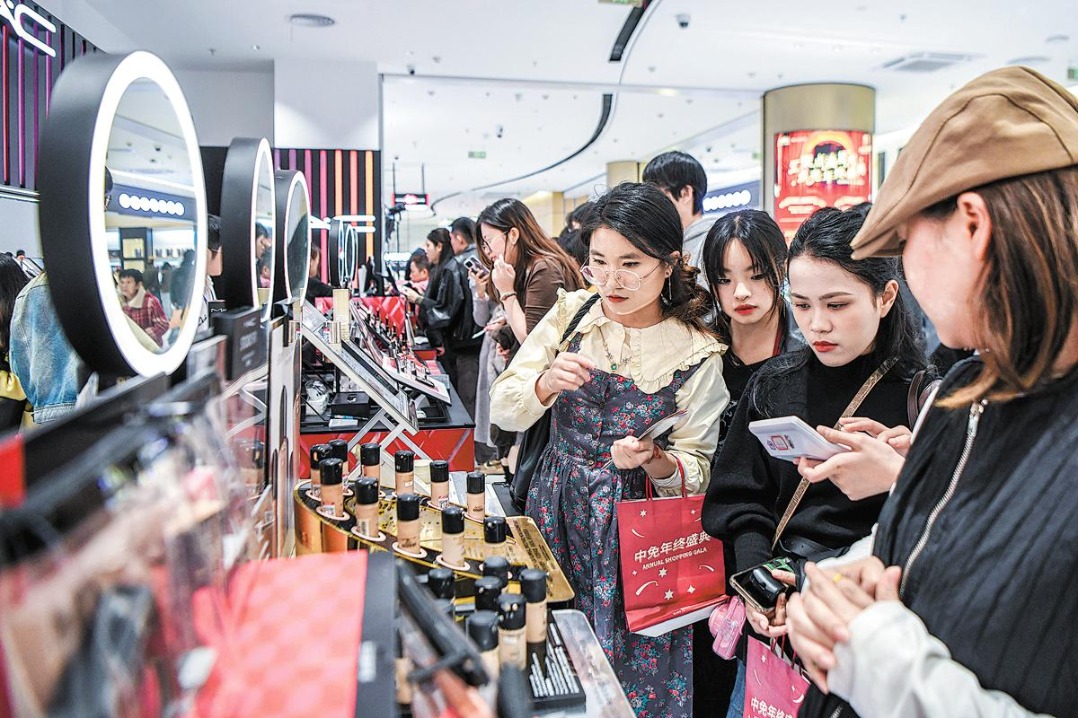Young collectors paint rosy picture for art market
By ZHANG KUN in Shanghai | China Daily | Updated: 2021-11-30 07:23

Scores of galleries attract buyers at key events in Shanghai
Young collectors are emerging rapidly in China's booming art market, bringing a new perspective to the industry-evidenced by a series of art fairs and events in Shanghai early this month.
For the past three years, November has been named Shanghai's Month of International Art, with dozens of exhibitions, art fairs and other events taking place throughout the city.
The municipal authorities recently took the strategic decision to prioritize the development of art-trading industries, as an important gauge of cultural soft power in the metropolis.
In the city's 14th Five-Year Plan (2021-25) for cultural development, released in September, one of the objectives announced by local authorities is to build Shanghai into a global center for art trading.
Such efforts have paid off, and two major events held in Shanghai from Nov 11 to 14 showed that the COVID-19 pandemic has not affected the city's flourishing art market.
West Bund Art & Design, an annual fair that has attracted art galleries worldwide since it was first held in 2014, expanded its exhibition to the West Bund Dome, a space converted from the former Shanghai Cement Factory, making this year's event the largest yet.
Jin Yi, a spokesman for the fair, said more than 70 percent of exhibitors comprised overseas galleries and institutions, with half of them also showing at renowned international events such as Art Basel.
This year, West Bund Art & Design, welcomed some 130 galleries, with about 4,000 artworks on display.
Meanwhile, ART021 took place at the Shanghai Exhibition Center, attracting 134 galleries from 14 countries. Some of these galleries chose to take part in both Shanghai events, presenting different displays.
Traditionally, West Bund Art & Design places more emphasis on presenting institutions' academic aims, while ART021 focuses more on the market and sales.
The two events declined to disclose their sales volume, although Artron, a leading art industry portal, found that more than 80 percent of the institutions taking part in the West Bund fair clinched successful deals, and "a majority of them reached or exceeded their expectations," according to a summary of the event.
Visitors tested
Strict COVID-19 protocols failed to deter enthusiastic art lovers from lining up patiently for admission to Shanghai's two biggest art fairs of the year. Visitors had to take a nucleic acid test and present their medical record for the past 48 hours, together with green QR codes and travel documents before being allowed to enter.
Young and wealthy art lovers sporting designer clothing and accessories flocked to both events, undeterred by the pandemic.
Zhang Zikang, director of the Central Academy of Fine Art Museum, said, "New art buyers in China will now run to see an exhibition, and fight for their favorite artwork."
At ART021, a gallery representative said the numerous red dot stickers attached to tags on the artworks signified that more than one client had expressed a strong intention to buy the item.
"There is a waiting list for some popular paintings," said the representative, who declined to reveal his name or the institution he works for. "We usually promise to reserve a piece by the end of the day. If a potential buyer has not made up his or her mind by then, we contact the second and third names on the list."
Another art industry insider, who also asked to remain anonymous, said that 400 names were on the waiting list for the most popular artwork.
Zhang said the emergence of a new group of young art collectors in China is "an inevitable phenomenon".
He added that as society and the economy have developed in China, many young people-often the wealthy offspring of Chinese entrepreneurs-are studying overseas. Visiting museums has become a habit for them.
These young people have international vision and a deep understanding of contemporary art and culture, while their parents, even if they are interested in art, do not have such an incisive view of this market, Zhang said. This has given the younger generation great confidence in assessing the value of art, and they are "able to close a deal with rapid decision-making."
Bao Yifeng, co-founder of ART021 and a series of other fairs, such as JINGART in Beijing and DnA SHENZHEN in Guangdong province, said gallery operators are also starting at a younger age.
"I've met with such owners born after 1990, and they represent young artists who have just graduated from universities. Some of them also have other family members working in the art trade," Bao said.
Some young buyers visit art fairs with their father, whose job is to pay the bill, Bao added.
























